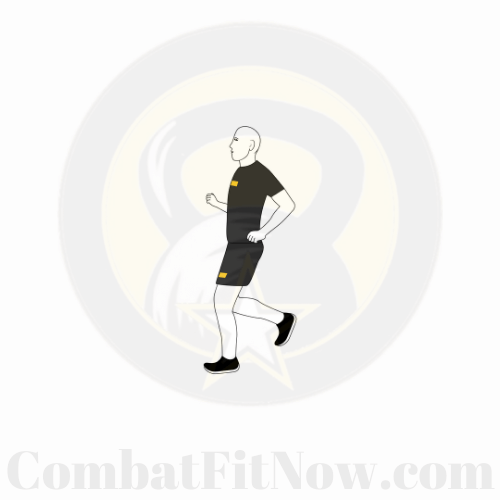Running backwards, also known as backward running or retro running, can be a beneficial exercise for various reasons, including improved balance, coordination, and activation of different muscle groups. However, it’s essential to perform this exercise with caution to prevent injuries. Here are proper instructions for running backwards:
Video Instructions on How to Run Backwards
1. Warm-up: Before any exercise, it’s crucial to warm up your muscles. Perform light aerobic activities such as jogging in place, jumping jacks, or dynamic stretches to increase blood flow and flexibility.
2. Find a Safe Area: Choose a flat and open area free of obstacles or potential hazards. A track, open field, or a well-maintained path are ideal.
3. Start Slow: Begin with a slow and controlled pace. Focus on maintaining proper form and balance. Don’t rush into fast backward running until you feel comfortable and confident.
4. Body Position: Keep an upright posture with your chest lifted and shoulders relaxed. Engage your core to maintain stability. Avoid leaning too far back or forward.
5. Use Short Strides: Take short steps to maintain control. This reduces the risk of tripping and allows for better balance. As you become more accustomed to running backward, you can gradually increase your stride length.
6. Look Over Your Shoulder: Keep your head up and periodically glance over your shoulder to be aware of your surroundings. This helps you avoid potential obstacles or hazards.
7. Arm Movement: Allow your arms to move naturally, opposite to your leg movement. This arm movement assists in balance and coordination.
8. Gradual Progression: If you’re new to backward running, start with short distances and gradually increase the duration as your comfort and proficiency improve.
9. Intervals and Variation: Mix in backward running intervals with forward running or other exercises to add variety to your workout routine.
10. Stop Gradually: When finishing your backward run, slow down gradually rather than abruptly stopping to avoid sudden strain on your muscles.
11. Focus on Form: Concentrate on maintaining good form throughout the exercise. This includes proper foot placement, avoiding crossing your feet, and staying aware of your body alignment.
12. Cool Down: After backward running, cool down with static stretches focusing on the muscles used during the exercise. This helps improve flexibility and reduce muscle soreness.
13. Listen to Your Body: Pay attention to any discomfort or pain. If you experience pain, stop the exercise and consult with a healthcare professional if needed.
Remember to consult with a fitness professional or healthcare provider before starting any new exercise routine, especially if you have pre-existing health conditions or concerns.



